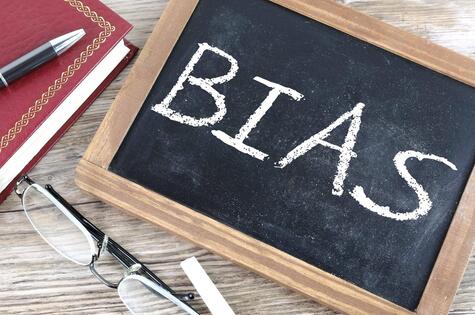|
1/29/2021 The Myth of the Unprejudiced Scientist and the Three Levels of Protection Against BiasRead Now As modern science was emerging during the 18th and 19th centuries, ideas regarding how science should be performed also began to take shape. One particular idea posited that scientists subject theories to test, but do not allow their biases to get in the way. Real scientists, it was argued, are unprejudiced, and rather than try to prove theories right or wrong, they merely seek the truth based on experiment and observation. According to this notion, real scientists don’t have preconceptions, and they don’t hide, ignore, or disavow evidence that does not fit their own views. Real scientists go where the evidence takes them. Unfortunately, the romantic notion that real scientists operate free of bias proved to be dead wrong. Scientists, even “real scientists”, are human beings, and like all human beings they have biases that influence what they do and how they do it. While a minority of scientists does engage in outright fraud, even honest scientists who claim they are only interested in the truth can unconsciously bias the results of their experiments and observations to support their ideas. In past posts I have already provided notable historical examples of how scientists fooled themselves into believing they had discovered something that wasn’t real such as the cases of the physicist René Blondot, who thought he had discovered a new form of radiation, or the astronomer Percival Lowell who thought he had discovered irrigation channels on Mars.
It is in part because of the above realization, that scientists developed several methodologies to exclude bias and limit the number of possible explanations for the results of experiments and observations such as the use of controls, placebos, and blind and double-blind experimental protocols. This is the first level of protection against bias. Today the use of these procedures in research is pretty much required if scientists expect their ideas to be taken seriously. However, while nowadays scientists use and report using the procedures described above when applicable, the proper implementation of these procedures is still up to the individual scientists, which can lead to biases. This is where the second level of protection against bias comes into play. Scientists try to reproduce each other’s work and build upon the findings of others. If a given scientist reports an important finding, but no one can reproduce it, then the finding is not accepted. But even with these safeguards, there is still a more subtle possible level of bias in scientific research that does not involve unconscious biases or sloppy research procedures carried out by one or a several scientists. This is bias that may occur when all the scientists involved in a field of research accept a certain set of ideas or procedures and exclude other scientists that think or perform research differently. Notice that above I used the words “possible” and “may”. The development of a scientific consensus within the context of a well-developed scientific theory always leads to a unification of the ideas and theories in a given field of science. So far from bias, this unification of ideas may just indicate that science has advanced. But in general, and especially early on in the development of a scientific field, science is best served not when researchers agree with each other but when they disagree. So the third level of protection against bias that keeps science true occurs when researchers disagree and try to prove each other to be wrong. In fact, some funding agencies may even purposefully support scientists that hold views that are contrary to those accepted in a field of research. The theory is that this will lead to spirited debates, new ways of looking at things, and a more thorough evaluation of the thinking and research methods employed by scientists. However, disagreements among scientists do have a downside that is often not appreciated. While science may benefit when in addition to Scientist A, there is a Scientist B researching the exact same thing who disagrees with the ideas and theories of Scientist A, science may not necessarily benefit when Scientist A and B research something and A thinks that B is wrong and doesn’t have the slightest idea of what he/she is doing, while B thinks A is an idiot who doesn’t understand “real science”. There are a number of examples of long-running feuds in science between individual scientists or even whole groups of scientists. In these feuds, the acrimony can become so great that the process of science degenerates into dismissal of valid evidence, screaming matches, insults, and even playing politics to derail the careers of opponents. But, of course, the problem I have described above is nothing more than the human condition and in this sense science is not unique. Every activity where humans are involved has to deal with bias, but at least in science we can recognize we are biased and implement the three levels of protection against this bias. It may be imperfect, it may be messy, it may not always work, but, being human, that’s the best we can do. Image from Alpha Stock Images by Nick Youngson used here under an Attribution-ShareAlike 3.0 Unported (CC BY-SA 3.0) license.
0 Comments
Your comment will be posted after it is approved.
Leave a Reply. |
Details
Categories
All
Archives
June 2024
|
 RSS Feed
RSS Feed